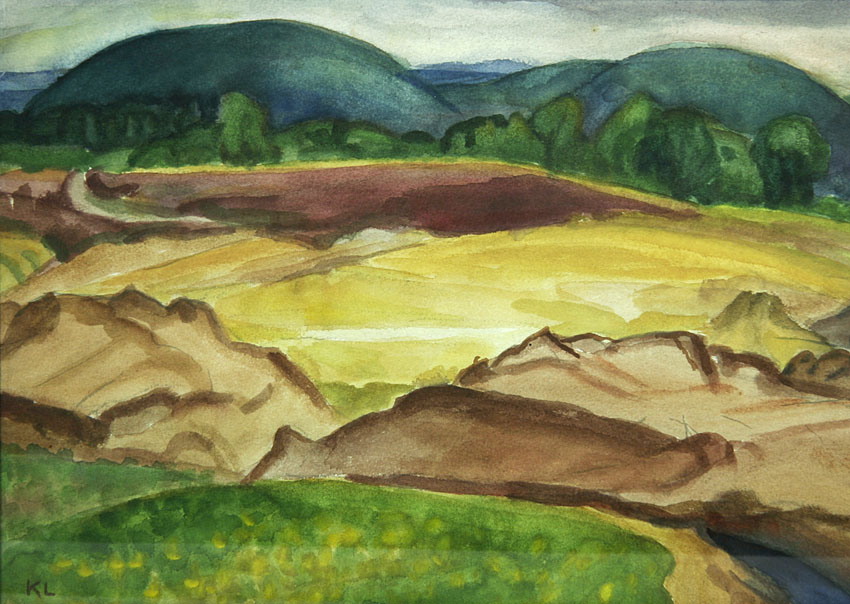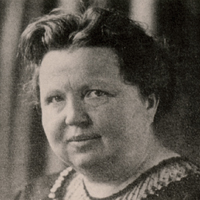|
Käthe Loewenthal
Käthe Frida Rosa Loewenthal (27 March 1878, in Berlin – 26 April 1942, in Izbica) was a German Modernist landscape painter of Jewish ancestry. She was murdered in the Shoah. The Painter Susanne Ritscher was her sister. Biography Her father Wilhelm Loewenthal was an ophthalmologist and hygienist. They moved frequently, living in Geneva, Lausanne, Paris and Berlin, as her father did work at various universities. The year 1890 found them in Bern, where she made friends with the family of a local pastor and converted to Protestantism.Time Line @ Art and Memory.  S ...
S ...
[...More Info...] [...Related Items...] OR: [Wikipedia] [Google] [Baidu] |
Bernese Highlands
The Bernese Oberland ( en, Bernese Highlands, german: Berner Oberland; gsw, Bärner Oberland; french: Oberland bernois), the highest and southernmost part of the canton of Bern, is one of the canton's five administrative regions (in which context it is referred to as ''Oberland'' without further specification). It constitutes the Alpine region of the canton and the northern side of the Bernese Alps, including many of its highest peaks, among which the Finsteraarhorn (), the highest in both range and canton. The region essentially coincides with the upper basin of the Aare, the latter notably comprehending Lake Thun and Lake Brienz, the two large lakes of the region. On the banks of the lakes or the Aare are the main settlements of Thun, Spiez, Interlaken, Brienz and Meiringen. The numerous side valleys of the Bernese Oberland include a large number of Alpine villages, many of them being tourist resorts and connected by mountain railways to Spiez and Interlaken. The Lötschberg, ... [...More Info...] [...Related Items...] OR: [Wikipedia] [Google] [Baidu] |
Stolperstein
A (; plural ; literally 'stumbling stone', metaphorically a 'stumbling block') is a sett-size, concrete cube bearing a brass plate inscribed with the name and life dates of victims of Nazi extermination or persecution. The project, initiated by the German artist Gunter Demnig in 1992, aims to commemorate individuals at exactly the last place of residency—or, sometimes, work—which was freely chosen by the person before they fell victim to Nazi terror, forced euthanasia, eugenics, deportation to a concentration or extermination camp, or escaped persecution by emigration or suicide. , 75,000 have been laid, making the project the world's largest decentralized memorial. The majority of commemorate Jewish victims of the Holocaust. Others have been placed for Sinti and Romani people (then also called "gypsies"), Poles, homosexuals, the physically or mentally disabled, Jehovah's Witnesses, black people, members of the Communist Party, the Social Democratic Party, and ... [...More Info...] [...Related Items...] OR: [Wikipedia] [Google] [Baidu] |
Lauterstein
Lauterstein () is a municipality of the district of Göppingen in Baden-Württemberg, Germany. History The municipality of Lauterstein was formed on 1 January 1974 by the merging of the municipalities of Nenningen and Weißenstein. Geography The municipality ('' Gemeinde'') of Lauterstein is found in the district of Göppingen, in Baden-Württemberg, one of the 16 States of the Federal Republic of Germany. Lauterstein lies on the northeast edge of Göppingen's district, along its border with the Ostalb district. The municipal area is physically located in the and regions, part of the of the Swabian Jura. Elevation above sea level in the municipal area ranges from a high of Normalnull (NN) to a low of NN. Portions of the Federally-protected and nature reserves are located in Lauterstein's municipal area. Politics Lauterstein has two boroughs (''Ortsteile''), Nenningen and Weißenstein, and six villages: Albhof, Birkenbuckelweg, Christentalhof, Edelmannshof, Lützelalb, ... [...More Info...] [...Related Items...] OR: [Wikipedia] [Google] [Baidu] |
Henni Lehmann
Henriette Lehmann, née Straßmann, known as Henni (10 October 1862, Berlin – 18 February 1937, Berlin) was a politically and socially active German painter and writer of Jewish ancestry. Biography Her father, Wolfgang Straßmann, was a doctor and social activist who, for many years, was a member of the Prussian House of Representatives.Brief biography @ Hiddensee Kultur. In 1888, while attending the Royal School of Art, she met and married , a legal scholar. After the wedding, they both converted to Protestantism and moved to , where he had been appointed a Professor at the |
Blaue Scheune
The ''Blaue Scheune'' ('Blue Barn') in the village of Vitte on the German Baltic Sea island of Hiddensee was originally a Low German hall house from the early 19th century. It housed not only the barn, but also the bakery and the living area for a master miller and baker. The artist, Henni Lehmann Henriette Lehmann, née Straßmann, known as Henni (10 October 1862, Berlin – 18 February 1937, Berlin) was a politically and socially active German painter and writer of Jewish ancestry. Biography Her father, Wolfgang Straßmann, was a doc ..., bought the old building around 1920 and chose the blue colour to which the house owes its name today. The ''Blaue Scheune'' became well known as a result of regular exhibitions by the Hiddensee Women Artists' Federation (''Hiddenseer Künstlerinnenbundes''). This circle was closely linked to Katharina Bamberg, Clara Arnheim and Elisabeth Andrae as well as the best-known of Hiddensee's women artists, Elisabeth Büchsel. In the 1950s ... [...More Info...] [...Related Items...] OR: [Wikipedia] [Google] [Baidu] |
Elisabeth Büchsel
Elisabeth Büchsel (1867–1957) was a German painter known for her Impressionist portraits and landscapes. Biography Büchsel was born on 29 January 1867 in Stralsund, Germany. She studied in Berlin, Paris, and Munich. Her teachers included Lucien Simon and Christian Landenberger. She spent summers on the island of Hiddensee. She was a member of (Hiddensee Association of Artists), where her fellow members included Elisabeth Andrae, Käthe Loewenthal Käthe Frida Rosa Loewenthal (27 March 1878, in Berlin – 26 April 1942, in Izbica) was a German Modernist landscape painter of Jewish ancestry. She was murdered in the Shoah. The Painter Susanne Ritscher was her sister. Biography Her fathe ... and Julie Wolfthorn. She died on 3 July 1957 in Stralsund. References External linksimages of Büchsel's workon Artnet {{DEFAULTSORT:Büchsel, Elisabeth 1867 births 1957 deaths 20th-century German women artists 19th-century German women artists People from Stralsund [...More Info...] [...Related Items...] OR: [Wikipedia] [Google] [Baidu] |
Clara Arnheim
Clara Arnheim (24 April 1865 – 28 August 1942) was a German painter of Jewish ancestry; best known for her depictions of life among the fishermen on the Baltic coast. Her younger brother, Fritz Arnheim, was a noted historian. Biography She was born in Berlin. Despite her family's resistance to the idea of a woman being a professional painter, she studied with Franz Skarbina in Berlin and Edmond Aman-Jean in Paris.Brief biography @ Lexikon VdBK. Among the many organizations of which she was a member, the " Verein der Berliner Künstlerinnen" (an artists' society for women) and the |
Elisabeth Andrae
Louise Elisabeth Andrae (3 August 1876, Leipzig – 1945, Dresden) was a German Post-Impressionist landscape painter and watercolorist. Biography She studied with two landscape painters; in Dresden and Hans von Volkmann in Karlsruhe. She settled in Dresden, but spent long periods on the island of Hiddensee. There, she helped organize a group known as the "", an association of women artists that included Clara Arnheim, Elisabeth Büchsel, Käthe Loewenthal and . They were regular exhibitors at an art venue known as the Blaue Scheune (Blue Barn), established in 1920 by Henni Lehmann. She also exhibited frequently with a group known as the "Kunstkaten" in Ahrenshoop. Her brother was the archaeologist Walter Andrae, Curator and Director of the Vorderasiatisches Museum in Berlin. After 1930, she assisted him by painting large murals of several excavation sites in Babylon, Assur, Uruk and Yazılıkaya; two of which may still be seen at the museum. Her works remained very popular ... [...More Info...] [...Related Items...] OR: [Wikipedia] [Google] [Baidu] |
Hiddensee
Hiddensee () is a car-free island in the Baltic Sea, located west of Germany's largest island, Rügen, on the German coast. The island has about 1,000 inhabitants. It was a holiday destination for East German tourists during German Democratic Republic (GDR) times, and continues to attract tourists today. It is the location of the University of Greifswald's ornithological station. Gerhart Hauptmann and Walter Felsenstein are buried there. Name The name ''Hedinsey'' surfaces as early as the ''Prose Edda'' and the ''Gesta Danorum'' written by Saxo Grammaticus and means "Island of Hedin". The legendary Norwegian king, Hedin, was supposed to have fought here for a woman or even just for gold. Under Danish rule the name ''Hedins-Oe'' ("Hedin's Island") was common. Even in 1880 the island was shown in German maps as ''Hiddensjö'' and, in 1929, in German holiday guides as ''Hiddensöe''. Its full Germanization to ''Hiddensee'' is thus relatively recent. Geography Hiddensee is ... [...More Info...] [...Related Items...] OR: [Wikipedia] [Google] [Baidu] |
Adolf Hölzel
Adolf Richard Hölzel (13 May 1853 – 17 October 1934) was a German painter. He began as a Realist, but later became an early promoter of various Modern styles, including Abstractionism. Biography Hölzel was born in Olmütz. His father was the publisher, Eduard Hölzel. In 1868, he completed a three-year apprenticeship as a typesetter at the map publishing firm of F.A.Perthes in Gotha. Three years later, he and his family moved to Vienna where the following year he enrolled at the Academy of Fine Arts, moving to the Academy of Fine Arts, Munich, in 1876, where he studied with Wilhelm von Diez. After completing his studies, Hölzel married and divided his time between Munich and Rothenburg ob der Tauber. In Munich, he became acquainted with Fritz von Uhde, who introduced him to Impressionism. Together with Von Uhde, Ludwig Dill and Arthur Langhammer, he helped create an art school, the Dachauer Malschule, in the nearby village of Dachau, which later became the keystone ... [...More Info...] [...Related Items...] OR: [Wikipedia] [Google] [Baidu] |








